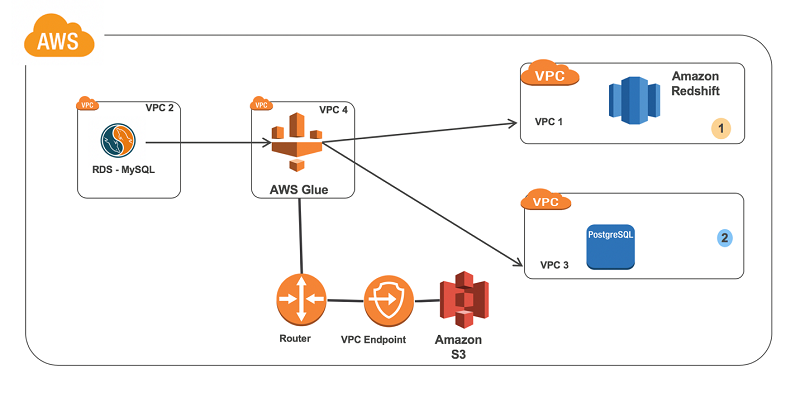AWS Big Data Blog
Category: RDS for MySQL
Unlock insights on Amazon RDS for MySQL data with zero-ETL integration to Amazon Redshift
Amazon Relational Database Service (Amazon RDS) for MySQL zero-ETL integration with Amazon Redshift was announced in preview at AWS re:Invent 2023 for Amazon RDS for MySQL version 8.0.28 or higher. In this post, we provide step-by-step guidance on how to get started with near real-time operational analytics using this feature. This post is a continuation […]
Optimize Federated Query Performance using EXPLAIN and EXPLAIN ANALYZE in Amazon Athena
Amazon Athena is an interactive query service that makes it easy to analyze data in Amazon Simple Storage Service (Amazon S3) using standard SQL. Athena is serverless, so there is no infrastructure to manage, and you pay only for the queries that you run. In 2019, Athena added support for federated queries to run SQL […]
Data preparation using an Amazon RDS for MySQL database with AWS Glue DataBrew
With AWS Glue DataBrew, data analysts and data scientists can easily access and visually explore any amount of data across their organization directly from their Amazon Simple Storage Service (Amazon S3) data lake, Amazon Redshift data warehouse, or Amazon Aurora and Amazon Relational Database Service (Amazon RDS) databases. You can choose from over 250 built-in […]
Connect to and run ETL jobs across multiple VPCs using a dedicated AWS Glue VPC
In this blog post, we’ll go through the steps needed to build an ETL pipeline that consumes from one source in one VPC and outputs it to another source in a different VPC. We’ll set up in multiple VPCs to reproduce a situation where your database instances are in multiple VPCs for isolation related to security, audit, or other purposes.
Migrate RDBMS or On-Premise data to EMR Hive, S3, and Amazon Redshift using EMR – Sqoop
This blog post shows how our customers can benefit by using the Apache Sqoop tool. This tool is designed to transfer and import data from a Relational Database Management System (RDBMS) into AWS – EMR Hadoop Distributed File System (HDFS), transform the data in Hadoop, and then export the data into a Data Warehouse (e.g. in Hive or Amazon Redshift).




